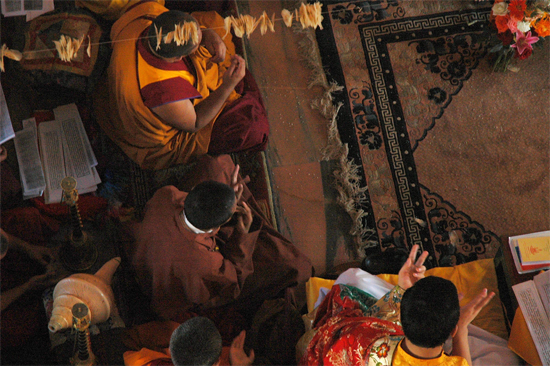
Again, an elder was once circumambulating the outer perimeter at Radreng Monastery. Dromtönpa asked him, “O elder, performing circumambulation may be satisfying, but wouldn’t it be better if you practiced the Dharma?”
The elder felt that, instead of performing circumambulations, perhaps it would be more effective if he were to read Mahayana sutras, so he began to read sutras on the temple veranda. Dromtönpa then asked him, “Reading sutras might also be satisfying, but wouldn’t it be better if you practiced the Dharma?”
The elder took this as a sign that, when contrasted with reading sutras, engaging in meditative absorption is more profitable, so he abandoned reading sutras and sat down with his eyes closed. Again, Dromtönpa asked, “Meditating might also be satisfying, but wouldn’t it be better to practice the Dharma instead?”
Failing to think of any other method, the elder asked, “O spiritual mentor, then what kind of Dharma practice would you have me undertake?”
It is said that Drom replied, “O elder, give up this life; give up this life.”
In this way Dromtönpa stated that so long as we fail to forsake attachment to this life, whatever we undertake does not become Dharma practice, for such an act remains within the bounds of the eight mundane concerns. By contrast, if we let go of attachment to this life, we will remain untainted by the eight mundane concerns. Only then will whatever we do become a path to liberation.
Once Potowa asked the spiritual mentor Dromtönpa, “What is the demarcation between Dharma and non-Dharma?”
Dromtönpa replied, “If it is a remedy against affliction, it is Dharma; if not, it is not Dharma. If it is at variance with all worldly people, it is Dharma; if it is in accord with the worldly, it is not Dharma. If its trace is positive, it is Dharma; if not, it is not Dharma.”
From Wisdom of the Kadam Masters, edited by Thupten Jinpa, © 2013. Reprinted by arrangement with Wisdom Publications, Inc., Somerville, MA. www.wisdompubs.org.